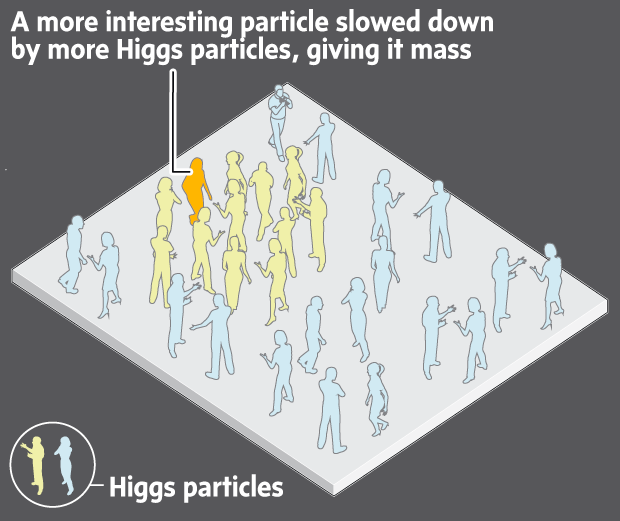Britain’s Peter Higgs and Belgium’s Francois Englert won the 2013 Nobel prize for physics for predicting the existence of the Higgs boson, the award-giving body announced said on Tuesday. Read the full story on the announcement.
So what is the Higgs boson?
There are many analogies scientists have used over the years as they tried to put in plain words the workings of the elusive Higgs boson particles.
Simply put, the Higgs mechanism is what slows down the world’s smallest building blocks and gives them their mass, making the universe what it is now.
In the graphic below, the orange person represents an interesting particle, surrounded by Higgs particles. Like a celebrity at a party, the interesting particle attracts a swarm of fans around her. As more fans gather, it's harder for the celebrity to move at all. This is the Higgs mechanism, with Higgs particles collecting around interesting particles, slowing their speed and giving them mass.
Less interesting particles, like photons, are like non-famous people who can walk through a room unimpeded, since they go at the speed of light and have no mass.
In theory, the universe is full of something called the Higgs field where these interactions take place.

Illustration by Matt Bambach
With files from Tu Thanh Ha/The Globe and Mail and Robert Evans/Reuters